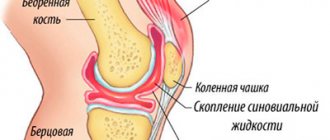The operation to remove the tonsils (tonsils) is called tonsillectomy. Surgery is performed for both children and adult patients. Tonsillectomy of the tonsils becomes necessary when the inflammatory process in the tonsils becomes permanent and becomes the cause of dangerous chronic intoxication of the body, as a result of which many of the patient’s organs suffer, for example, the heart, kidneys and joints.
The palatine tonsils belong to the human immune system. Their main role is to neutralize viruses and bacteria that enter the nasopharynx with air or food. The tonsils are collections of lymphoid tissue on both sides of the pharynx. When the tonsils come into contact with pathogenic microorganisms, active production of leukocytes occurs in them. They attack pathogenic flora and destroy it.
The surface of the tonsils is not smooth as it may seem. On its surface there are small depressions - lacunae. Their number reaches ten pieces. Inside, the tonsil is cut by a network of ornate canals - crypts, which approach the surface of the tonsils and end in lacunae.
Defeated bacteria, along with dead leukocytes, are independently removed from the tonsils and swallowed together with saliva. They dissolve in the stomach under the action of gastric juice. This is how the amygdala cleanses itself and prepares for a new defense.
The process described above is how it should be. This is how healthy tonsils behave. If a person’s immunity is weakened and the concentration of pathogenic microflora is too high, the tonsils’ own resources are not enough to defeat the enemy. Bacteria (most often the causative agent is streptococcus), not finding proper resistance, colonize the tonsils and begin to actively live in them, and inflammation of the tonsils occurs. This condition is called chronic tonsillitis.
Chronically inflamed tonsils are dangerous: instead of protecting the tonsils, they themselves become a source of inflammation, and waste products of bacteria are released into the blood and spread throughout the body, causing complications in other human systems: cardiovascular, excretory, musculoskeletal. Chronic tonsillitis can cause miscarriage and premature birth.
Most often, chronic inflammation of the tonsils develops against the background of untreated sore throat and is its complication. But there are other causes of chronic tonsillitis:
- chronic inflammation of the nasopharynx;
- allergy;
- constant stress;
- poor nutrition;
- non-compliance with the work and rest schedule;
- working or living in unfavorable conditions (dust, gas pollution, inhalation of harmful vapors or substances);
- bad habits;
- heredity.
Since there are many social and everyday factors among the causes of the disease, chronic tonsillitis is called a social disease. Moreover, the number of patients with this diagnosis is growing year by year.
With chronic tonsillitis, you don’t need to think about surgery right away. It is necessary to try conservative treatment methods, which include drug therapy, lavage of the palatine tonsils and physiotherapeutic procedures. The patient's "I want" alone is not enough to remove the tonsils. After all, it is an important protective organ. He needs to be given a chance and helped to restore his functions. And only if conservative therapy does not help, and irreversible pathological processes occur in the body, is unilateral or bilateral removal of the tonsils performed.
Sign up for a tonsil removal service right now!
Make an appointment
What is tonsillectomy?
Removal of palatine tonsils is one of the most common operations in the practice of an ENT doctor.
Many people think that it is performed only for children, but this is not so. Adults may also need it if chronic tonsillitis has become severe and is accompanied by purulent complications, and enlarged tonsils interfere with swallowing and even breathing, causing sleep apnea syndrome - a short-term cessation of breathing during sleep. The palatine tonsils sometimes become inflamed. Inflammation of the tonsils (tonsils) is referred to as tonsillitis. It, in turn, can be acute and chronic.
Inflammation of the tonsils. Photo: James Heilman, MD / (Creative Commons Attribution-Share Alike 3.0 Unported license)
Acute tonsillitis is called tonsillitis. With chronic tonsillitis, the inflammatory process lasts for years, with periodic exacerbations. An exacerbation is usually accompanied by fever, sore throat and sore throat, including when swallowing.
The tonsils become coated, bad breath appears, and the cervical lymph nodes become enlarged. If exacerbations recur one after another, and conservative treatment does not help, you have to resort to surgical treatment - removal of the tonsils (tonsillectomy).
Diagnostics
The need for tonsillectomy is determined by an ENT doctor after a conversation with the patient, a visual and instrumental examination, and obtaining the results of diagnostic studies. Laboratory tests and instrumental examinations not only indicate the presence of chronic tonsillitis, but also reflect the degree of influence of the inflammatory process on the body. Some of the tests and examinations are necessary to ensure that there are no contraindications to surgery.
Before removing tonsils, the following is prescribed:
- general blood test with leukocyte formula;
- blood chemistry;
- blood clotting test;
- blood for syphilis, HIV, hepatitis;
- rheumatic tests;
- general urine analysis;
- ECG;
- FLG;
- culture from tonsils.
Difference from tonsillotomy
Along with tonsillectomy, there is another operation with a similar name - tonsillotomy, in which enlarged tonsils are removed not entirely, but partially (usually in children). The indication for such an operation is the hypertrophy of these tonsils, when they occupy the entire space from the anterior palatine arch to the midline of the pharynx. With tonsillotomy, only the “excess” of enlarged tonsils is removed, returning them to normal size. Tonsillotomy is less traumatic than radical removal of the tonsils, and allows you to preserve their protective functions.
Anesthesia
Tonsillectomy surgery is performed under both local anesthesia and general anesthesia (anesthesia). Both methods of pain relief have pros and cons, so the decision is made by the attending doctor, taking into account the health condition and wishes of the patient.
Local anesthesia
The classic surgical technique (under local anesthesia) has been performed for many decades and still exists today. An anesthetic solution in an amount of about 20 ml is injected into several points around the tonsil - usually 1% lidocaine with the addition of adrenaline (to reduce bleeding). The effect is that the tissues are deeply impregnated with the drug, so the pain is almost not felt, and the tonsil appears to be raised above the palatine arches and is easy to isolate. This technique is called infiltration anesthesia.
If the patient has had allergic reactions to these drugs, they are replaced with ultracaine. Next, the operating doctor proceeds directly to removing the tonsils. The patient is only required to strictly follow his instructions. A tonsillectomy lasts about half an hour; before sending the patient into the room, the surgeon carefully checks whether the bleeding has stopped. This is an important point in the operation.
General anesthesia (anesthesia)
Nowadays, tonsillectomy is performed more and more often under general anesthesia. This is due to the fact that anesthetic equipment and drugs for anesthesia have changed a lot recently. Modern anesthetics are considered to be of a high safety class; they are non-toxic and do not carry the same complications as before. Anesthesia is easily tolerated by the patient and feels similar to normal sleep.
The photo shows an anesthesia device from the German company Drager used in the clinic.
To carry out general anesthesia, the patient is carefully examined; before the operation, he is examined by an anesthesiologist, since, despite the safety of anesthesia, if there are deviations in the tests, the operation can be postponed. The operation is performed strictly on an empty stomach; the patient cannot even drink water. After the examination, the patient is escorted to the operating room, where he is placed on the operating table and put on a breathing mask. A mixture of oxygen and anesthesia medication is supplied to it, sleep occurs within a few minutes, and the operation ends for the patient - awakening occurs in the ward.
Doctors anesthesiologists
The clinic employs highly qualified anesthesiologists, including specialists from the Children's Clinical Hospital named after. N.F. Filatov, who have academic degrees of candidates and doctors of medical sciences, many years of unique work experience. Our specialists use an anesthetic apparatus from the German company Drager and the latest generation of medicines. All this allows operations to be performed under general anesthesia (anesthesia), which is safe for the patient’s health, with further rapid recovery in the postoperative period.
Drugs
In their work, anesthesiologists use the drugs sevoran, diprivan, esmeron, enfluron, isoflurane, dormicum and others. The choice of a specific drug is at the discretion of the anesthesiologist and depends on each specific case, test results and other factors.
Why doesn't conservative treatment help?
Due to immunodeficiency (congenital or acquired) or concomitant diseases that contribute to prolonged inflammatory processes (diabetes mellitus, chronic infection), conservative treatment of tonsillitis may be ineffective.
Important! Group A beta-hemolytic streptococcus can settle in the tonsils, which causes rheumatic damage to the heart, joints and kidneys. Removing the tonsils avoids these complications.
Other factors that complicate conservative treatment include smoking and alcohol abuse. For teachers, singers and actors, the risk factor is the need to talk long, loudly and a lot.
At what age is surgery performed?
Surgical treatment may be recommended for adults and children over 8 years of age. By this time, the tonsils are fully formed. The palatine tonsils are an integral part of the pharyngeal ring - a group of tonsils (paired palatine and tubal, unpaired nasopharyngeal and lingual) - an important organ of local immunity of the nasopharynx and respiratory tract. Early removal of tonsils can contribute to the development of atopic diseases - allergic rhinitis or bronchial asthma. Such operations are usually not performed on children under three years of age, since they rarely have tonsillitis - the tonsils are too small.
Important! Tonsils can be removed no earlier than six months after polio vaccination.
Why you should contact us
If you need tonsil removal or other ENT procedures, contact the RAMI clinic in St. Petersburg.
We carry out various types of surgical interventions, as well as laboratory tests. With us you will receive specialist consultations, diagnostics and support during the rehabilitation period to speed up recovery.
The price of tonsil removal depends on the technique, individual characteristics of the patient and other factors. The final cost is calculated by the doctor during consultation.
To make an appointment, call the clinic.
If you are really looking for your doctor...
Contraindications
They can be absolute (excluding the possibility of tonsillectomy) and relative, when everything is postponed until the reasons preventing the operation are eliminated.
Absolute contraindications:
- diseases with increased bleeding: hemophilia, hemorrhagic diathesis, Werlhof's disease, agranulocytosis, leukemia;
- heart failure grade 2–3;
- acute infectious diseases and exacerbation of chronic ones;
- active form of tuberculosis;
- cirrhosis of the liver.
Relative contraindications:
- caries (before sanitation - dental prophylaxis of the oral cavity);
- inflammation of the gums;
- pustular diseases of the mouth and skin;
- ARVI and influenza;
- exacerbation (decompensation) of chronic diseases;
- menstruation;
- pregnancy after the 26th week due to the risk of premature birth.
Types of tonsil removal surgeries
Classical
The surgeon installs a mouth retractor and separates the tonsil tissue along with the capsule from the surrounding tissues in a “blunt” way using a raspator. The bleeding is stopped, the vessels are cauterized with an electrocoagulator or laser. The whole process takes from 15 to 40 minutes.
Electrocoagulation
Figure 1. Incision at the base of the tonsil during electrocoagulation.
Source: Maxillofacial Plastic and Reconstructive Surgery / Open-i (Attribution 4.0 International) Instead of a scalpel, a high-frequency current electrode is used. The vessels are “sealed”, so blood loss is minimal. Recovery may take longer due to associated injuries to surrounding tissues.
Removed tonsils. Maxillofacial Plastic and Reconstructive Surgery / Open-i (Attribution 4.0 International)
Cryodestruction
Tonsils are frozen with liquid nitrogen. As a result, they become pale, flat and hard, and after a day they die and are gradually rejected. The method is recommended for patients with an increased risk of bleeding (thrombocytopenic purpura, hemophilia, etc.), severe heart failure and endocrine pathology.
Important! The cryosurgical method is used in a series of procedures lasting up to 1.5 months. During this time, a relapse of the disease is possible if not all of the tonsil tissue has been destroyed. Cryosurgery is used when classical surgery is not possible.
Ultrasonic destruction
High-frequency sound vibrations warm up the tissues to prevent bleeding. Unlike exposure to liquid nitrogen or electricity, surrounding tissue is almost not damaged. Ultrasound method is one of the least traumatic.
Radio wave destruction
A probe is installed inside the tonsils, which generates radio waves. They evaporate the water from here and cause scarring. Ablation can be repeated several times. Anesthesia is not needed here - only local anesthesia or light sedation. Recovery is quick, but radical tonsil removal is almost impossible. Therefore, radio wave therapy is used for their hypertrophy, but not for chronic tonsillitis, when radical intervention is required.
Cold plasma destruction
A relatively new method of removing tonsils. It is based on the property of cold plasma (radio frequency energy converted into ionic dissociation) to separate molecular bonds in tissues without releasing thermal energy. Plasma is called cold because it causes minimal heating of the tissue, which means that pain after surgery will be insignificant, recovery will be easy and quick. The method is low-traumatic and can be used for partial or complete removal of tonsils.
Laser removal
Laser tonsillectomy can be complete or partial (with cutting of the upper layers of the tonsils). Different types of laser are used - carbon, infrared, etc. Only pathological tissues are removed, and healthy ones are not affected. Other advantages include immediate separation of the tonsil from the underlying tissues with coagulation of blood vessels, which reduces the risk of bleeding and infection.
Comparative characteristics of the two methods
Laser tonsil removal
Carbon dioxide laser is used (CO2 laser)
- the operation is almost bloodless
- lower risk of bleeding after surgery
- faster wound healing compared to traditional removal
- less pain in the postoperative period
- Minuses:
- heating of surrounding tissues, there may be burns to the edges of the wound.
Radio wave tonsil removal
Surgitron radiosurgical device is used
- the operation is also almost bloodless
- radio wave produces an antibacterial effect, reducing the likelihood of inflammation after surgery
- postoperative swelling in the wound is less pronounced, the wound heals much faster
- there are no burns or damage to healthy tissues, because the effect of the cut is carried out without physical pressure, the removal of the tonsil is carried out carefully
- early complete tissue healing without the formation of a rough scar
In some cases, to achieve maximum effectiveness, doctors can use a combined method: both laser and radio wave.
Postoperative period
Figure 2. Appearance of the throat after tonsillectomy. Source: James Heilman MD, CC BY-SA 3.0.
Recovery usually takes 3–4 weeks, the first of which takes place in the hospital. This is necessary in order to respond in time to the most common complication of tonsillectomy – pharyngeal bleeding. To prevent it, hemostatic drugs are prescribed.
From the operating room the patient is transferred to a ward under the supervision of the attending physician. On the first day, it is forbidden to swallow, spit or expectorate saliva. You can only breathe through your mouth. In case of severe pain, the patient is prescribed painkillers.
A diet is recommended for all days of the postoperative period
- on the first day, adults should refrain from eating, and small children should not eat or drink for the next 6 hours;
- In the first week after surgery, it is recommended to eat liquid, smooth food;
- During the recovery period, food should be soft; it is not recommended to eat too hot, cold, sour, or spicy. This may irritate the mucous membranes of the throat and mouth.
- In the postoperative period, if necessary, a course of antibiotics is prescribed.
Figure 3. Memo: what you can and cannot eat after surgery.
Source: verywellhealth.com Bed rest must be observed for 2 days. In most cases, the patient is discharged from the hospital within a week for outpatient observation and treatment.
Preparation for the operation and its implementation
No complicated preparation is required before a tonsillectomy. If the patient is taking anticoagulants (blood thinners), they are discontinued several days before surgery. However, this should only be done with the permission of a doctor. The evening before the intervention, you can take a mild sedative. The last meal should be 4-6 hours before the procedure.
The operation is usually performed under local anesthesia - the mucous membrane of the pharynx and the root of the tongue are irrigated or injected with an anesthetic solution. For young children, general sedation may be used. The duration of the procedure depends on the type of intervention, on average – from 20-30 minutes to 1 hour.
Complications after removal of tonsils
The most common of them is bleeding, which can develop both on the first day after the intervention (primary bleeding, and 5-6 days after it. The incidence of postoperative pharyngeal bleeding ranges, according to various observations, from up to almost 60%. Minor bleeding after removal of the tonsils is stopped using a tampon, electrocoagulation, or the anterior and posterior palatine arches are sutured together to reduce the area of bleeding.
Also, as a side effect of the procedure, there is a risk of blood aspiration (blood entering the respiratory tract). Then the blood is urgently removed with an electric suction and bronchoscopy is performed.
After removal of the tonsils, swelling of the soft palate and larynx is possible. If signs of difficulty breathing appear, decongestant therapy is carried out.
If the wound becomes inflamed after removal of the tonsils, antibiotic therapy is prescribed.
In most cases, the operation takes place without complications or side effects. If the patient experiences pain, the doctor will prescribe analgesics on the first day after removal of the tonsils, and then non-steroidal anti-inflammatory drugs.
Sometimes the patient may experience voice changes, taste disturbances, and nasal sounds.
It is extremely rare to experience damage to the temporomandibular joint due to forceful opening of the mouth with a mouth opener during tonsil removal.
Complications and how to avoid them
One of the very rare complications: velopharyngeal insufficiency. After surgery, velum closure may be impaired. This complication is manifested by the appearance of a nasal voice in the patient, the appearance of snoring during sleep, and disturbances in the processes of speech and swallowing food. More often, this complication appears in patients with a hidden cleft of the hard palate that was not diagnosed before surgery. To exclude such a condition, a thorough examination of patients is necessary. One of the signs of the presence of a submucosal cleft of the hard palate is the splitting of the uvula.
Sources
1. Palchun V.T.
Otorhinolaryngology: national guidelines. M.: GEOTAR-Media, 2016. 2. Karpishchenko S.A., Svistushkin S.M. Chronic tonsillitis and tonsillitis. Immunological and clinical aspects. St. Petersburg: Dialogue, 2017.
3. Lukan N.V., Sambulov V.I., Filatova E.V. Conservative treatment of various forms of chronic tonsillitis. Almanac of Clinical Medicine, 2010, 23: 37-41.
4. Belov, B.S., Shcherbakova M.Yu. A-streptococcal tonsillitis: modern aspects. Pediatrics. 2009, 88(5): 127-135.
5. Turovsky A.B, Kolbanova I.G. Chronic tonsillitis - modern concepts. Doctor.RU, 2009, 49(5): 16-21.










